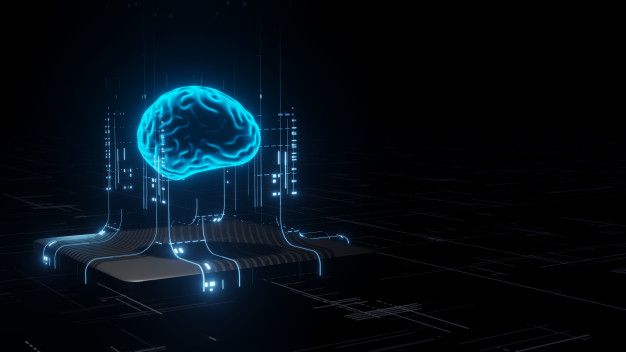Generative models have become increasingly significant in the realm of artificial intelligence, particularly for image synthesis tasks. These models can generate realistic images, modify existing ones, and create new artistic expressions, making them valuable tools across various industries. This article will guide you through the process of training generative models, focusing on techniques that can yield high-quality image synthesis results.
1. Introduction
Generative models are a class of algorithms that can create new data instances that resemble a given training dataset. Unlike discriminative models, which learn to classify input data, generative models focus on understanding the underlying distribution of data to generate new instances. Popular types of generative models include Generative Adversarial Networks (GANs), Variational Autoencoders (VAEs), and diffusion models. Effective training of these models is crucial for producing realistic and high-fidelity images.
2. Understanding Generative Models
Definition of Generative Models
Generative models learn the joint probability distribution of the input data, allowing them to generate new samples that resemble the training data. This ability distinguishes them from discriminative models, which only learn to differentiate between classes.
Types of Generative Models
- Generative Adversarial Networks (GANs): GANs consist of two neural networks, a generator and a discriminator, that work against each other. The generator creates synthetic images while the discriminator evaluates their authenticity.
- Variational Autoencoders (VAEs): VAEs compress input images into a latent space and then reconstruct them, allowing for smooth interpolation and new sample generation.
- Diffusion Models: These models generate images by gradually denoising random noise into coherent images, often producing impressive results in terms of quality and diversity.
3. Setting Up the Environment
Choosing the Right Framework
When training generative models, popular frameworks like TensorFlow and PyTorch are commonly used. Both provide comprehensive libraries and tools for building and training deep learning models.
Hardware Requirements
Utilizing GPUs is essential for efficiently training deep learning models, especially when dealing with large datasets and complex architectures.
Installing Necessary Libraries
Ensure you have the following libraries installed:
- NumPy: for numerical computations.
- OpenCV: for image processing.
- Matplotlib: for visualizing results.

4. Data Preparation
Dataset Selection
Choosing a suitable dataset is crucial. Factors to consider include the dataset’s diversity, quality, and resolution. Popular datasets for image synthesis tasks include CIFAR-10, CelebA, and LSUN.
Data Preprocessing
Preprocessing steps, such as normalization (scaling pixel values), resizing images to a uniform dimension, and data augmentation (e.g., rotations, flips), enhance the model’s performance and generalization.
Creating Training and Validation Sets
Divide your dataset into training and validation subsets. The training set is used to train the model, while the validation set helps evaluate its performance and generalization capabilities.
5. Model Architecture Design
Choosing the Right Architecture
Selecting the appropriate architecture for your generative model is essential. For instance, GANs typically use a deep convolutional architecture, while VAEs utilize an encoder-decoder structure.
Layer Configurations
Design your model with key components, including convolutional layers for feature extraction, normalization layers to stabilize training, and activation functions (e.g., ReLU or Leaky ReLU) to introduce non-linearity.
Customization for Specific Tasks
Tailor your model architecture to fit specific tasks, such as adjusting the depth of layers or modifying the number of filters based on the complexity of the images being synthesized.
6. Training the Generative Model
Defining the Loss Functions
The choice of loss functions is critical. GANs typically use adversarial loss, while VAEs rely on a combination of reconstruction loss and Kullback-Leibler divergence.
Optimization Techniques
Common optimizers, such as Adam and Stochastic Gradient Descent (SGD), can be employed to minimize loss functions. Adjust hyperparameters like learning rate and momentum for optimal performance.
Training Process
The training loop typically involves:
- Forward pass: Passing input data through the model.
- Loss calculation: Determining the difference between predicted and actual outputs.
- Backpropagation: Updating model weights based on the calculated loss.

7. Monitoring and Evaluation
Metrics for Evaluation
Use quantitative metrics, such as Inception Score and Fréchet Inception Distance (FID), to measure the quality of generated images. Qualitative assessments, like visual inspections, are also important.
Monitoring Training Progress
Utilize visualization tools like TensorBoard or Matplotlib to track loss metrics and generated images over time, allowing you to monitor the training process effectively.
Saving and Loading Models
Implement checkpointing techniques to save model states periodically, enabling you to resume training without loss of progress.
8. Fine-tuning and Improving the Model
Hyperparameter Tuning
Optimize hyperparameters through systematic approaches like grid search or random search, which can significantly impact model performance.
Data Augmentation Techniques
Apply data augmentation strategies to create variations in your training dataset, enhancing model robustness.
Transfer Learning
Consider utilizing pre-trained models as a starting point for your training process, especially if working with limited data, to improve synthesis quality.
9. Challenges and Solutions
Common Challenges in Training Generative Models
- Mode collapse in GANs, where the generator produces a limited variety of outputs.
- Overfitting in VAEs, leading to poor generalization.
- Instability during training due to the adversarial nature of GANs.
Proposed Solutions
Address these challenges by implementing strategies like using alternative training methods (e.g., Wasserstein GANs), applying regularization techniques, and increasing dataset size and diversity.
10. Applications of Trained Generative Models
Image Generation
Generative models can produce high-quality synthetic images that can be indistinguishable from real ones.
Image Editing and Inpainting
These models can modify existing images by adding or removing elements seamlessly.
Style Transfer
Generative models can transfer artistic styles from one image to another, creating unique compositions.
11. Future Trends in Generative Models
Advancements in Model Architectures
New architectures and hybrid approaches are being developed to enhance the efficiency and quality of image synthesis.
Ethical Considerations
As generative models become more powerful, ethical concerns arise regarding their misuse (e.g., deepfakes), highlighting the need for responsible use and regulations.
12. Conclusion
Training generative models for image synthesis involves understanding various architectures, effective data preparation, and a systematic training process. As the field continues to advance, ongoing experimentation and learning will be essential for harnessing the full potential of generative models.
13. References
For further exploration of generative models and image synthesis techniques, consider the following resources:
- Research papers on GANs, VAEs, and diffusion models.
- Online courses and tutorials on deep learning.
- Documentation for popular frameworks like TensorFlow and PyTorch.

FAQs: How to Train Generative Models for Image Synthesis
1. What are generative models?
Generative models are algorithms that learn the underlying distribution of a dataset to generate new data instances that resemble the training data. They differ from discriminative models, which focus on classifying data.
2. What are the most common types of generative models?
The most common types include:
- Generative Adversarial Networks (GANs): Utilize a generator and discriminator that compete against each other.
- Variational Autoencoders (VAEs): Encode input data into a latent space and then reconstruct it.
- Diffusion Models: Gradually denoise random noise into coherent images.
3. What tools and frameworks are best for training generative models?
Popular frameworks for training generative models include TensorFlow and PyTorch. Both provide powerful libraries and support for deep learning tasks.
4. How important is data preparation in training generative models?
Data preparation is crucial as it ensures your model learns from high-quality and representative data. Proper preprocessing, normalization, and augmentation can significantly enhance model performance.
5. What metrics should I use to evaluate the performance of a generative model?
Common evaluation metrics include:
- Inception Score: Measures the quality and diversity of generated images.
- Fréchet Inception Distance (FID): Compares the distribution of generated images to real images to assess quality.
6. What challenges might I face when training generative models?
Common challenges include mode collapse in GANs, overfitting in VAEs, and instability during training. Addressing these challenges requires understanding model architecture and employing suitable strategies.
7. How can I improve my generative model’s performance?
You can enhance your model’s performance through:
- Hyperparameter tuning.
- Data augmentation.
- Using transfer learning to leverage pre-trained models.
8. What are the applications of generative models in image synthesis?
Generative models can be applied in various areas, including:
- High-quality image generation.
- Image editing and inpainting.
- Artistic style transfer.
Tips for Training Generative Models for Image Synthesis
- Start with a High-Quality Dataset: Ensure your training dataset is diverse, representative, and of high quality. This is foundational for training effective models.
- Choose the Right Model Architecture: Select an architecture that suits your specific image synthesis task, whether it be GANs, VAEs, or diffusion models.
- Implement Data Augmentation: Enhance your dataset through data augmentation techniques to improve the model’s robustness and generalization capabilities.
- Monitor Training Progress: Use visualization tools like TensorBoard to track training metrics and evaluate model performance in real-time.
- Fine-tune Hyperparameters: Experiment with different hyperparameters, such as learning rates and batch sizes, to find the optimal settings for your model.
- Regularly Save Model Checkpoints: Implement checkpointing to save your model’s state periodically, allowing you to resume training without losing progress.
- Conduct Thorough Evaluations: Use both quantitative metrics (like FID) and qualitative assessments (visual inspections) to evaluate your model’s output effectively.
- Stay Updated on Research: The field of generative models is rapidly evolving. Regularly review the latest research papers and developments to learn new techniques and best practices.
- Engage with the Community: Participate in forums, online courses, and discussions to share insights, seek feedback, and learn from others working in the same field.
- Experiment and Iterate: Don’t hesitate to try different approaches and architectures. Continuous experimentation is key to discovering effective methods for image synthesis.